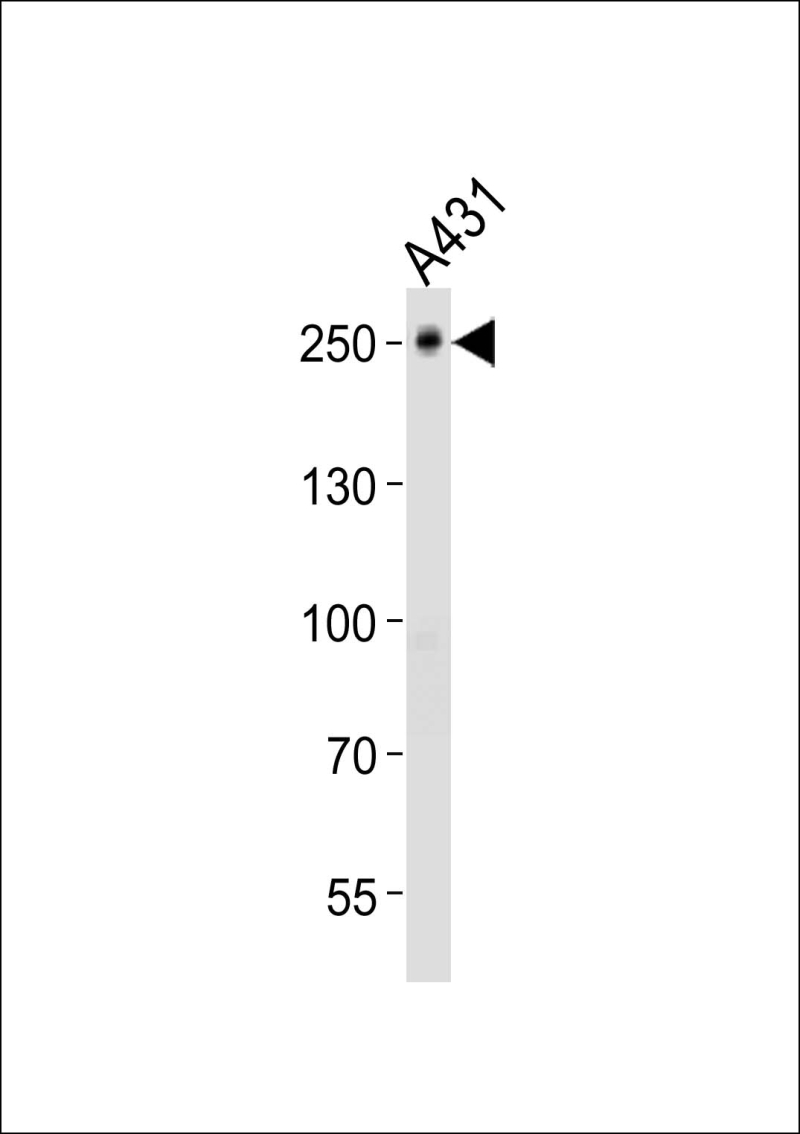
| WB | 1/1000 | Human,Mouse,Rat |
| IF | 咨询技术 | Human,Mouse,Rat |
| IHC | 咨询技术 | Human,Mouse,Rat |
| ICC | 技术咨询 | Human,Mouse,Rat |
| FCM | 咨询技术 | Human,Mouse,Rat |
| Elisa | 咨询技术 | Human,Mouse,Rat |
| Aliases | Tight junction protein ZO-1, Tight junction protein 1, Zona occludens protein 1, Zonula occludens protein 1, TJP1, ZO1 |
| Entrez GeneID | 7082 |
| WB Predicted band size | 195.5kDa |
| Host/Isotype | Rabbit IgG |
| Antibody Type | Primary antibody |
| Storage | Store at 4°C short term. Aliquot and store at -20°C long term. Avoid freeze/thaw cycles. |
| Species Reactivity | Human, Mouse, Rat |
| Immunogen | This TJP1 antibody is generated from a rabbit immunized with a KLH conjugated synthetic peptide between 1328-1362 amino acids from the C-terminal region of human TJP1. |
+ +
以下是3条关于TJP1(ZO-1)抗体的参考文献及摘要概括:
---
1. **文献名称**: *Tight junction proteins and signaling pathways in cancer and inflammation: a tale of two sides*
**作者**: González-Mariscal L, et al.
**摘要**: 该综述探讨了TJP1(ZO-1)在癌症和炎症中的作用,通过免疫组化和Western blot分析,发现ZO-1抗体标记的蛋白表达水平与肿瘤侵袭性和炎症反应相关,提示其在调节细胞旁屏障和信号传导中的双重功能。
---
2. **文献名称**: *Loss of ZO-1 expression correlates with breast cancer progression by modulating Wnt/β-catenin signaling*
**作者**: Zhou Y, et al.
**摘要**: 研究利用TJP1抗体检测乳腺癌组织中ZO-1的分布,发现其表达缺失与肿瘤转移和Wnt通路激活相关,提示ZO-1可能通过抑制β-catenin信号发挥抑癌作用。
---
3. **文献名称**: *Intestinal barrier dysfunction in inflammatory bowel disease via downregulation of ZO-1*
**作者**: Wang F, et al.
**摘要**: 通过免疫荧光和qPCR分析,发现炎症性肠病患者的结肠组织中TJP1抗体标记的ZO-1蛋白表达显著降低,导致肠道通透性增加,证实ZO-1缺失是肠道屏障损伤的关键机制。
---
如需更多文献,可进一步限定研究领域(如神经、免疫等)。
TJP1 (tight junction protein 1), also known as ZO-1 (Zonula Occludens-1), is a crucial component of tight junctions, specialized cell-cell adhesion structures that regulate paracellular permeability and maintain cell polarity in epithelial and endothelial tissues. Encoded by the TJP1 gene, this 220-225 kDa protein belongs to the membrane-associated guanylate kinase (MAGUK) family, characterized by three PDZ domains, an SH3 domain, and a guanylate kinase-like domain. These structural features enable TJP1 to act as a scaffolding protein, linking transmembrane tight junction proteins (e.g., claudins, occludins) to the actin cytoskeleton and signaling molecules.
Antibodies targeting TJP1 are widely used in research to investigate tissue barrier integrity, cell polarity, and intercellular communication. They help visualize tight junction morphology through techniques like immunofluorescence and immunohistochemistry, particularly in studies of epithelial or endothelial dysfunction in diseases such as inflammatory bowel disease, cancer metastasis, and neurological disorders. Commercially available TJP1 antibodies are typically raised in rabbits or mice, with both monoclonal and polyclonal variants validated for specific applications like Western blotting or super-resolution microscopy. Interpretation requires caution, as TJP1 expression changes may reflect dynamic junction remodeling rather than outright protein loss. Recent studies also explore its non-junctional roles in nuclear signaling and mechanotransduction, expanding the antibody's research utility.
×